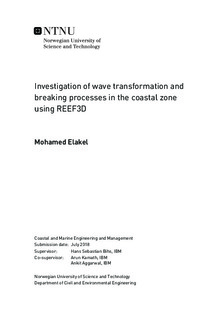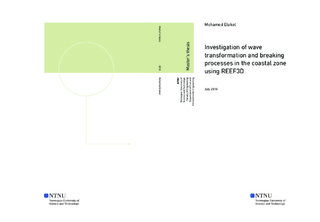| dc.description.abstract | Several human activities and industries that contribute in shaping the communities and economies around the world are located in the coastal zone. Therefore, it is very crucial to understand the behaviour of the coastal system to better evaluate the design choices related to the treatment of these areas.
Thanks to the rapid technological development in the computational domain, it is now possible to simulate the evolution of waves numerically to a great accuracy and evaluate their effects on the structures. In this thesis, the main goal is to numerically model the evolution and breaking of waves using the open-source CFD model REEF3D and compare the results to field data obtained with LiDAR and ADV sensors.
The novelty of this work lies in modelling a large scale field case with a CFD model in contrast to shallow water or phase-based models. Moreover, the accuracy of the results is improved by using wave reconstruction method in the generation of the incoming wave boundary and the application of non-uniform grids. \\
The complexity of simulating waves in the field lies in the numerous contributing variables that can not be controlled in a measurement campaign. The irregularity of the phases, directions and frequencies of the waves and their evolution on a three dimensional irregular bathymetry increase the difficulty of the task. Consequently, some bench-marking simpler cases will be investigated first and will be compared to laboratory monitored experiments to have confidence in the CFD model and to understand the underlying physics of the problem.
In the first case, the run-up of a solitary wave on a constant slope is compared to a laboratory experiment. In the second case, regular waves will be imposed on a constant slope and the plunging breaking behavior will be compared to a laboratory experiment. The third case will investigate the behavior of irregular waves on an experimental irregular slope and lastly the field case will be tackled and compared to field measurements. | |

